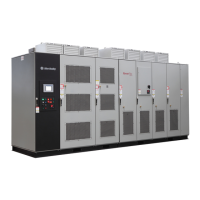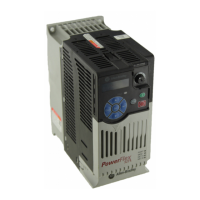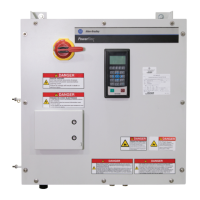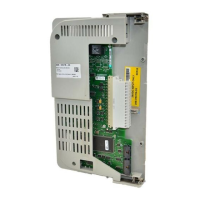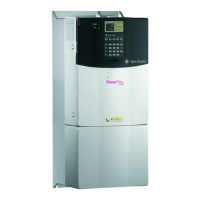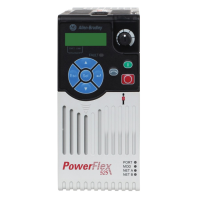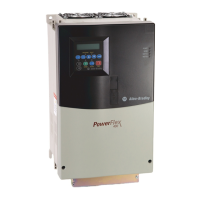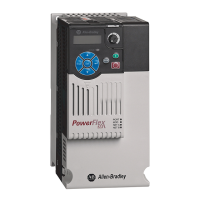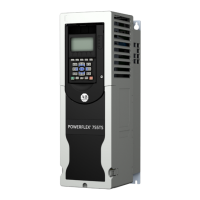Process PI Loop 2-125
PF70 options include DPI adapter ports, MOP, preset speeds, analog inputs
and PI setpoint parameter. In the PF700, options are expanded to also
include additional analog inputs, pulse input, and encoder input.
The value used for reference is displayed in PI Reference as a read only
parameter. The value used for feedback is displayed in PI Feedback as a
read only parameter. These displays are active independent of PI Enabled.
Full scale is displayed as 100.00.
Refer to
Analog Input Configuration on page 2-6.
PI Setpoint
This parameter can be used as an internal value for the setpoint or reference
for the process. If [PI Reference Sel] points to this Parameter, the value
entered here will become the equilibrium point for the process.
PI Output
The PI Error is then sent to the Proportional and Integral functions, which
are summed together.
PI Gains
The PI Proportional Gain and the PI Integral Gain parameters determine the
response of the PI.
The PI Proportional Gain is unitless and defaults to 1.00 for unit gain. With
PI Proportional Gain set to 1.00 and PI Error at 1.00% the PI output will be
1.00% of maximum frequency.
The PI Integral Gain is entered in seconds. If the PI Integral Gain is set to
2.0 seconds and PI Error is 100.00% the PI output will integrate from 0 to
100.00% in 2.0 seconds.
Positive and Negative Limits
The PI has parameters to define the positive and negative limits of the
output PI Positive Limit, and PI Negative Limit. The limits are used in two
places; on the integrator and on the sum of the Kp + Ki terms.
Providing an external source doesn't turn on Hold, the integrator is allowed
to integrate all the way to Positive or Negative limit. If the integrator
reaches the limit the value is clamped and the InLimit bit is set in the PI
Status parameter to indicate this condition.
The limits are entered in the range of 100.00.
PI Positive Limit must always be greater than PI Negative Limit.
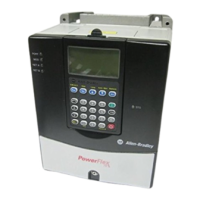
